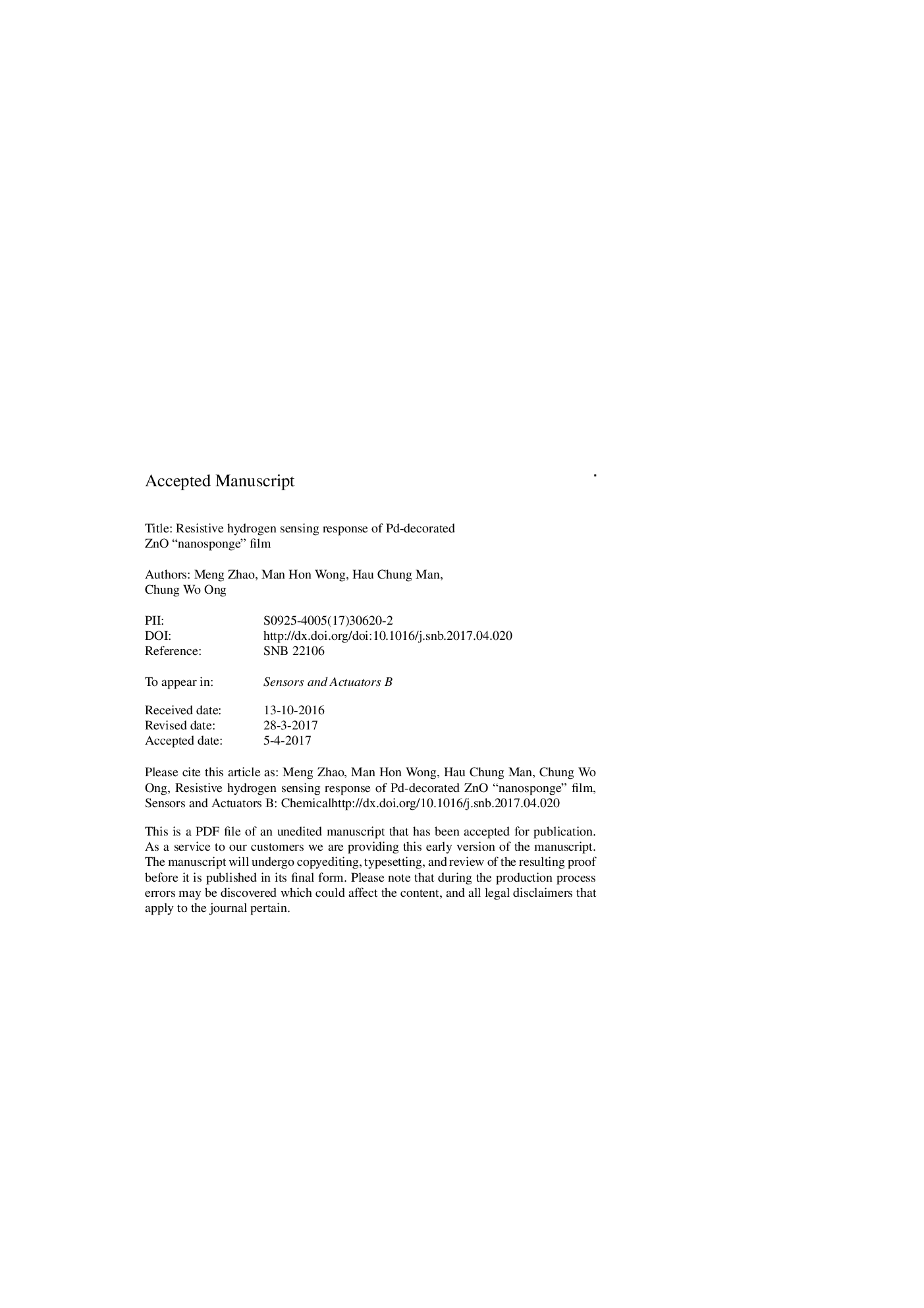| Article ID | Journal | Published Year | Pages | File Type |
|---|---|---|---|---|
| 5009321 | Sensors and Actuators B: Chemical | 2017 | 39 Pages |
Abstract
Hydrogen (H2)-induced resistive response of palladium (Pd)-decorated zinc oxide “nanosponge” (Pd/ns-ZnO) film was studied at different operation temperatures with and without UV illumination. The as-deposited ns-ZnO film, fabricated using a supersonic cluster beam deposition system, was highly porous and composed of â±/45 nm nanoclusters embedded in an amorphous matrix. After annealed at 500 °C for 1 h, the film was found to contain loosely connected 13 nm crystallites and had a porosity of 73%. The Pd/ns-ZnO film sensor at 20 °C showed a sensor response of 82 and a response time of 1 s for 2% H2. After heated slightly to 80 °C, the sensor response was increased by 43 times, and the response and recovery times dropped to 0.3 s and 18 s, respectively. This performance is superior to those of many other metal oxide nanomaterials operating at temperatures > 200 °C. The sensing properties of the Pd/ns-ZnO film showed little degradation when UV illumination was applied, but the sensing stability was improved. A reaction model was proposed to give an explanation to the gas sensing process. The influences of increasing the operation temperature and UV illumination are discussed.
Related Topics
Physical Sciences and Engineering
Chemistry
Analytical Chemistry
Authors
Meng Zhao, Man Hon Wong, Hau Chung Man, Chung Wo Ong,
